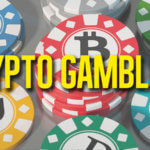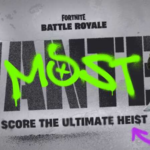Published on: 26/10/2022
Blockchain firm Oasys launching mainnet in three phases
Blockchain firm Oasys started launching its mainnet on October 25. The Oasys Mainnet is launching in three phases, with the last step being on November 22. This move is taken to ensure that the ecosystem will be stable and fully integrated.
During the first phase, Oasys’ 21 initial validators will take control of all nodes. Their main goal is to make sure that the Hub-Layer Oasys Layer 1 works efficiently. The next phase will start on November 8, when the integration of the existing framework and the Verse-Layer Oasys Layer 2 will commence.
The third phase will launch on November 22. The last phase will begin after the Hub-Layer and Verse-Layer stabilize. During this phase, Oasys will merge crucial elements of the Oasys ecosystem intended for user experience and game performance. These elements include the Oasys-Hub, which is the main portal interface that users will use to interact.
“The Mainnet launch is a significant step forward in creating a fully-functional, public-led gaming blockchain that will transform the gaming future and give extensive value to players and game developers alike,” Oasys director Daiki Moriyama said.
Moriyama said that the blockchain gaming ecosystem had grown dramatically in recent times. He asserted that this was a clear indication of a growing understanding of the value that Oasys had brought to the industry.
“However, now is not the time to reflect on past accomplishments, but focus on the exciting possibilities of the future,” Moriyama added.
A private token sale organized by leading crypto businesses, such as Republic Capita and Crypto.com, raised $20 million for Oasys earlier this year. After the launch of Oasys’ Mainnet, Oasys plans to open a public token sale that aims to attract more partners and investors.
Oasys partners with gaming industry giants
The launch of the mainnet is the latest step for the Singaporean-based firm after a year of expansions and establishing partnerships, with twenty-two well-known companies showing their support. These include Square Enix, Ubisoft, SEGA, Bandai Namco Research and Netmarble. There are also Web3 ecosystem companies who have partnered with the firm, including ConsenSys and tofuNFT.
“We have a shared vision about blockchain at the executive level. They don’t [want to] change that policy. They really understand the future adoption of blockchain. They’re not thinking about, you know, just the revenue, they want to create the next future [of gaming],” Oasys representative director Ryo Matsubara said.
When asked about plans to integrate blockchain technology with established gaming franchises, Matsubara said their partners were more interested in developing new blockchain games. He asserted that the gaming companies would wait until the “new model” of gaming matures before considering integrating blockchain with conventional games.
“When the model is fixed, becomes sustainable and successful, then strong [popular] IP will be added,” Matsubara said.
Matsubara said that the biggest hurdle for blockchain gaming was the strong reliance on the cost of in-game tokens. This dependency results in a tendency toward “speculation” rather than gameplay. He insisted that projects would need to adjust and enhance the gaming experience to create actual buzz for the games themselves.



